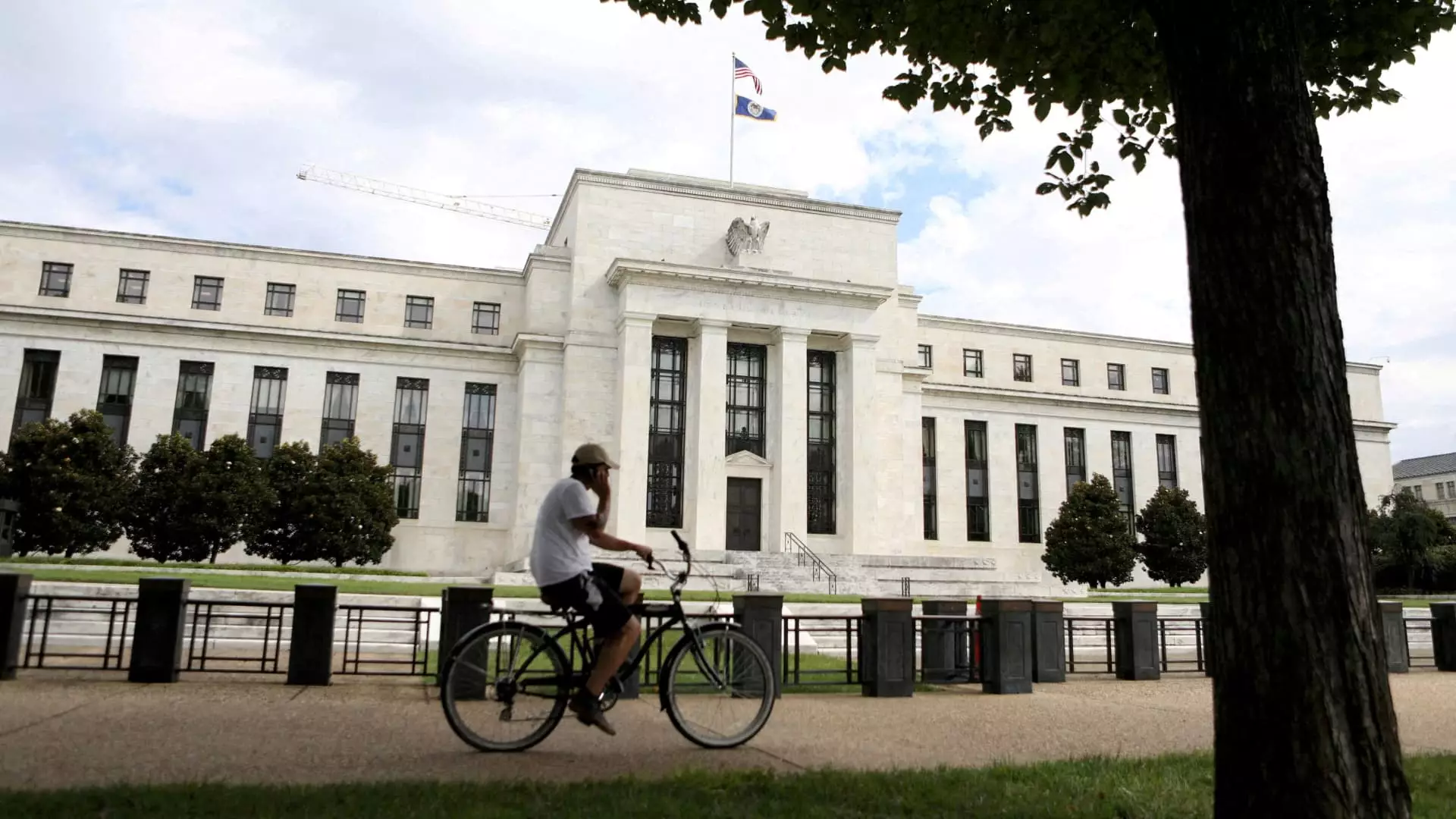As the U.S. grapples with economic uncertainty, one thing remains clear—the Federal Reserve operates on a distinct turf separate from Washington politics. Amid calls from President Donald Trump to cut interest rates to alleviate burdens on consumers, the Federal Reserve is staunchly holding its ground. The juxtaposition between the Fed’s mandate for economic stability and political pressures embodies a significant paradox. When economic indicators suggest room for rate cuts, Washington’s loud social echoes might indeed contradict economic realities.
Unemployment numbers may give a glimmer of hope, yet inflation looms like a storm cloud overhead. “Inflation is real; it won’t just fade into the ether,” is a sentiment echoed not only by economists but by many Americans who feel their purchasing power erode daily. The Fed’s Chair, Jerome Powell, aims to navigate these treacherous waters, insisting on the autonomy of monetary policy. This steadfastness is essential; succumbing to political pressures would unravel decades of credibility built by independent financial institutions.
Trump’s Trade Policies and Consumer Prices
The impact of Trump’s trade policies cannot be overstated. Economists warn that his brash tariffs may lead to an unpredicted rise in prices that contradicts consumers’ hopes for lower costs. Discrepancies in trade logistics and retaliatory tariffs threaten to escalate existing inflation. When agencies like the Fed contemplate monetary policy, they can only predict the significant ramifications of these trade measures on everyday expenses.
Consumers today are feeling the pinch of these high rates in daily life. The average American is finding it exceedingly challenging to manage their finances, as increasing borrowing costs further stifle discretionary spending. With prices on the rise and borrowing costs staying elevated, a perfect storm is forming. It reinforces the notion that consumers are the ones who ultimately pay the price, which is a sentiment echoed by Eugenio Aleman of Raymond James. The broader question remains: Do policymakers understand the everyday impacts of their fiscal decisions?
The Rate-Difference Forecast
Market experts project that the Federal Reserve may soon cut interest rates, maybe by mid-year or later. However, only time will dictate whether these projections will materialize. The crux is simple yet poignant: until the Fed acts decisively, the burden of high borrowing costs remains firmly on the shoulders of consumers. If rates decrease, one can only hope that the financial institutions pass on those benefits to consumers struggling with high-interest debts.
In the realm of credit cards, rates hover stubbornly high, exceeding 20% on average. This fact paints a picture of underlying anxiety amongst banks themselves, as economic uncertainty drives them to minimize risk at the expense of consumers. As Matt Schulz from LendingTree notes, banks are reevaluating their lending policies amidst an unsettling economic backdrop. Consumers with credit card debt are feeling this pressure acutely, with total credit card balances soaring to record highs. The irony is that while the economy seems robust in some areas, borrowing costs remind us all that we remain tethered to the whims of Fed decisions and market uncertainty.
Housing and Auto Loan Constraints
In the housing market, the struggles are equally palpable. Although mortgage rates have dipped slightly, they linger at levels that discourage potential buyers. According to Bankrate, the average flat-rate mortgage rate sits as high as 6.81%. Hopeful homebuyers are left wondering when prices will stabilize enough for them to secure their dream home. The looming specter of tariff effects on home construction materials compounds this situation, leading us to pose an uncomfortable question: Is homeownership still within reach for the average American?
The auto industry, for its part, mirrors the disarray. As new vehicle prices escalate partly due to tariffs, even borrowing a car presents a significant financial hurdle. Interest rates for auto loans have not fluctuated much but prices keep climbing—pressing more and more consumers against the wall as they search for affordable transportation. Ted Rossman identifies the discomforting reality confronting potential car buyers today, affirming that an entire market segment is feeling the heat from unsustainable pricing models and scarce inventories.
Student Loans: A Security Threat?
Meanwhile, student loans represent a separate challenge where interest rates remain fixed, yet the overall economic climate raises red flags. Undergraduates borrowing for the 2024-25 academic year face a stark rise, which reflects a disturbing trend towards increasing educational costs. The conversation around student debt also raises fundamental questions about the value of higher education in today’s economic environment. Are we burdening a generation with debt that may never feel truly attainable? For families, the stakes are exceedingly high; while current borrowers cope with stagnant rates, the looming prospect of diminished loan forgiveness options casts a pall over their financial outlook.
Despite the escalating chaos, some silver linings exist for consumers, particularly in the realm of savings accounts. Current offerings yield rates around 4.5%, a notable uptick—contradictory to declining rates elsewhere. This presents an intriguing paradox: during tumultuous times, savvy individuals who prioritize savings can find relative safety. However, for many, the real question remains: can they truly save in the face of rising costs and numbing consumer debt?
In this intricately woven economic landscape, the ability to navigate through uncertainty is becoming less about resilience and more about survival, as everyday Americans face the ramifications of financial decisions made far beyond their control.

